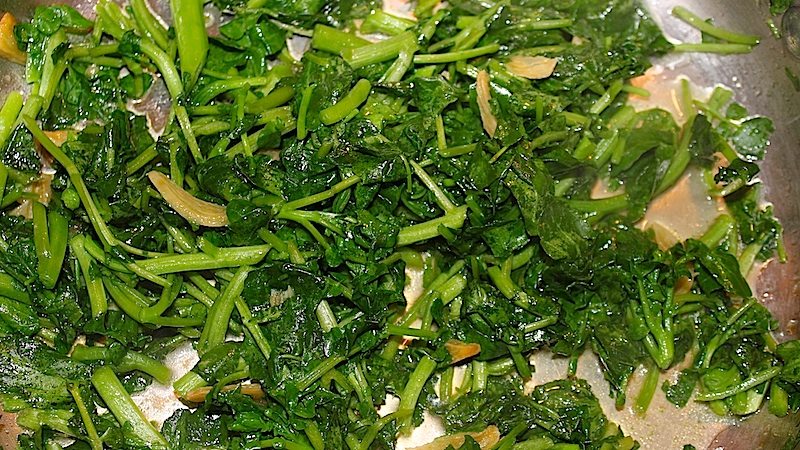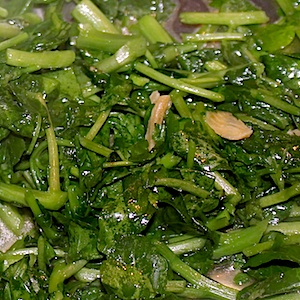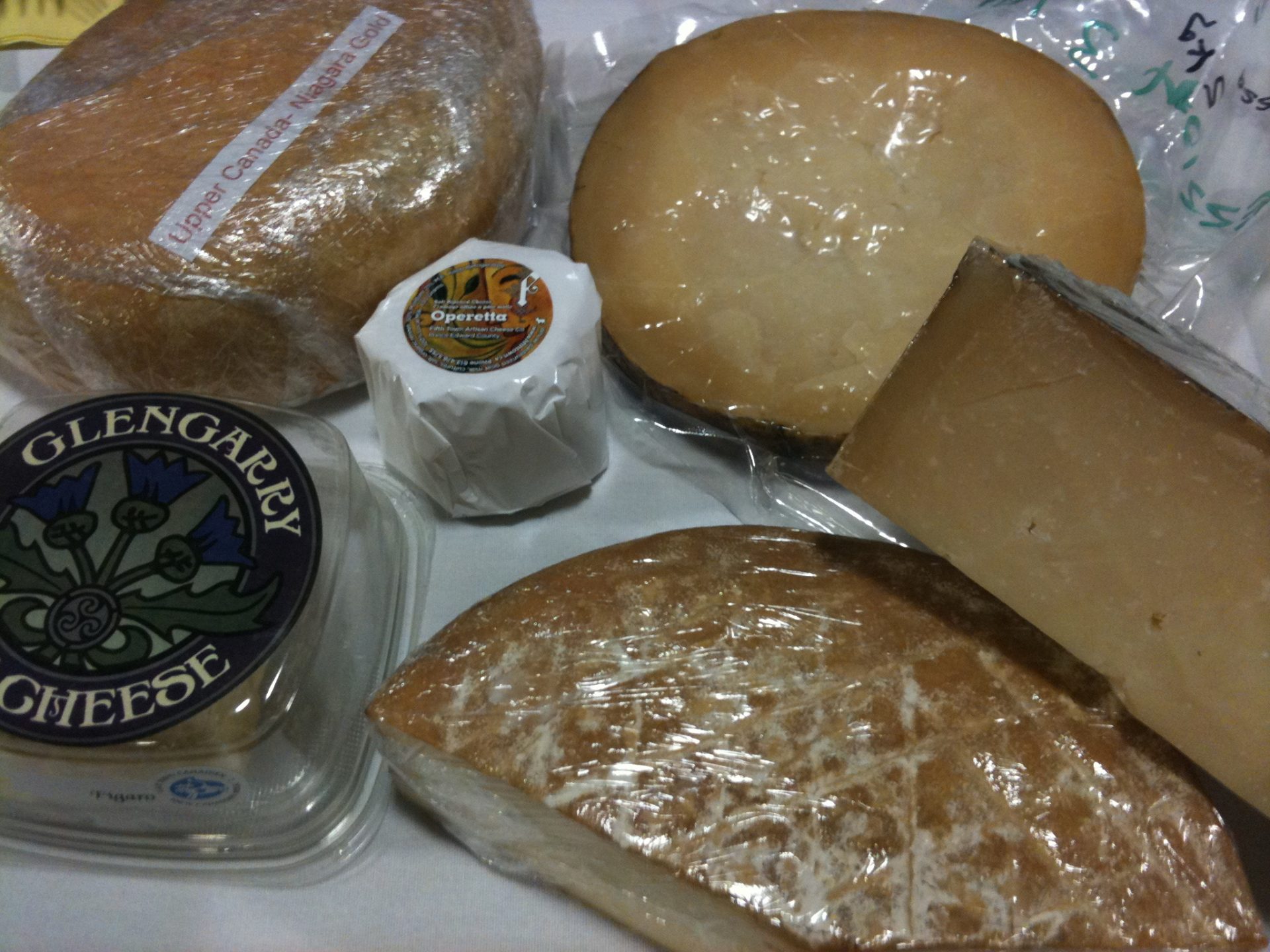
With apologies to J.B. McKinnon and Alisa Smith, there is a point during the winter that visits our fair land that the Canadian body yearns for something green to go with our meats and roots. By February, if not before, that will likely mean looking south for things like rapini from Texas, lettuce from California or watercress from Florida. On a comparative basis, one could make the (albeit tortured) argument that at least the Florida watercress is closer to us in Eastern Canada than the others, and given the numbers of our countrymen and women currently living there in flight from the Polar Vortex, from the ides of December to March we can conveniently adopt greens from that state into our “local” diet. Well, I do, anyway.
The way I like to eat my large carbon footprint watercress is to sautée them quickly. It’s a technique I have more or less stolen from Mother’s Dumplings, which used to serve a garlicky fry of the stuff with a splash of corn starch and water. They’ve since took it off the menu, serving only bok choi or gai lan (a.k.a. Chinese broccoli) prepared in this way. Down the road, at Rol San, the fried “greens” are pea shoots, which are also delicious, but I digress. The great modern translator and reporter of Chinese cuisine(s), Fuchsia Dunlop, has written about the Sino aversion to raw foods, including rare meats and, especially, salads. These are, she explains, what animals eat, not people – we cook. I have always thought the sautéed watercress, as it was at Mother’s Dumplings, was both revelatory (it would never have occurred to me to put it to the pan – radicchio and endive sure, but not the stuff of tea sandwiches) as well as an ingenious adaptation. The cook, I reckoned, must have seen the watercress in the Toronto markets, where it might have looked like the best thing around in early February, and gave it a traditional Chinese treatment. He or she must have liked the result.
If my wild speculations are anywhere near accurate, then there’s some botanical foudation to them. Watercress is pungent brassica, related to mustard and radish – and mustard greens, which are more common in Eastern cuisines. Cooking watercress mellows its flavour considerably, but if you’re quick they’ll retain their bite. In Chinatown, the watercress likely gets a very quick treatment on high heat, but like Marco Polo, I Italianize the dish by sautéing in olive oil on a gentler hob. This is a pretty forgiving dish. While it’s best if you can find the sweet spot where the watercress keeps a bit of firmness in the stalk but wilts into the garlicky oil on the leaves, it’s still delicious if it’s a little less or more cooked.
SAUTÉED WATERCRESS
1 bunch of watercress per 2 people, roughly chopped
2 or 3 garlic cloves, roughly chopped
glug of extra virgin olive oil
fresh or dried chilli (optional)
dash of soy sauce (optional)
Wash the watercress and shake dry leaving a goodly amount of water clinging to the leaves and stalks. Coat your pan with olive oil and add the garlic (and chilli, if you like a bit of heat). Cook the garlic on medium heat to desired doneness – I prefer to cook only to the point of translucency before any yellowing. Add the watercress, shake it about to cover the surface of the pan and cook for only a minute or two – it will wilt almost right away. Serve from pan into a dish using tongs. If you like, season with salt, or a dash of of good quality soy sauce.
 Malcolm Jolley is a founding editor of Good Food Revolution and Executive Director of Good Food Media, the company that publishes it. Follow him at twitter.com/malcolmjolley
Malcolm Jolley is a founding editor of Good Food Revolution and Executive Director of Good Food Media, the company that publishes it. Follow him at twitter.com/malcolmjolley






